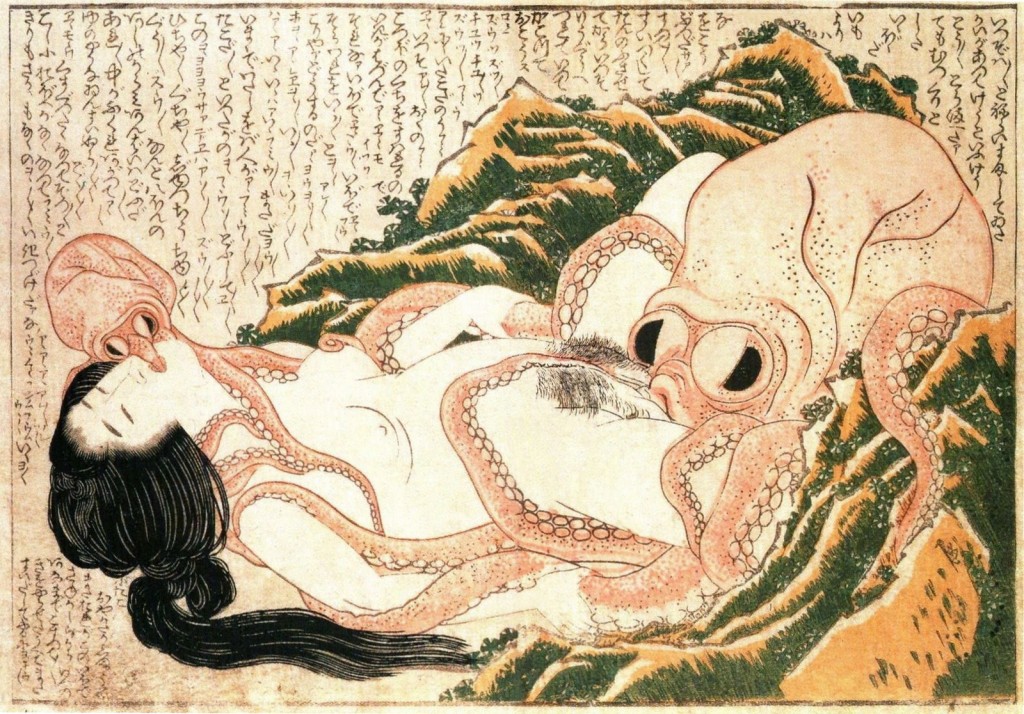
Mons Pubis
There’s one tidbit that almost everyone who has ever looked at the outline of an undergraduate art history course knows about the pre-eminent Victorian art critic John Ruskin. It may well be an urban legend, but it’s a great story.
On the night of his wedding to Effie Gray in 1848, Ruskin, who was also a noted writer, artist and philosopher, stood in front of his wife’s naked body, and was so disgusted by what he saw that he was unable to consummate the marriage. Six years later, the still-sexless marriage was annulled.
While Ruskin’s reasons for his (non-)actions have been the subject of speculation for art historians, writers and filmmakers for almost two centuries, the most-often cited possibility is that, being so habituated to the nude body as depicted in art, Ruskin’s almost primal disgust at his wife’s bushy mons pubis was what stayed his … hand.
And while it may seem absurd once you actually think about it, the idea that this fully grown, reasonably intelligent man could spend six years so disgusted by pubic hair that he chose abstention over sex has persisted for so long because the unrealistic depiction of women’s bodies is both ancient and universal. And it has real-world, damaging effects for those who live in women’s bodies.

L: The Venus of Willendorf, c. 28,000–25,000 BC Limestone and red ochre. Discovered in Austria. Photo: Matthias Kabel. R: The Venus of Moravany, c. 22,800 BC Mammoth tusk. Discovered in Slovakia. Photo: Martn Hlauka.
Figurines, sculptures and carvings of women from as early as 30,000 BC to 18,000 BC, from Eurasia, the Indus Valley and Mesopotamia, depict women’s bodies sans pubes. And the Greeks and Romans – inventors of the notion of the ‘ideal body’ and the source of inspiration for much of Western art history – were really into the smooth finish on their sculptures and paintings, as were most classical Middle Eastern painters.
This is not to say that all art has depicted genitalia as bald. In Greek and Roman sculpture some sculptures of men had pubic hair carved onto them, and the men of Renaissance art were usually depicted with a little bit of front-bum fluff. But the women – even into the neo-classical and modern eras – were either coquettishly obscured like Titian’s Venus or pre-pubescent and nymphish like Lefebvre’s Grasshopper.
Of course, there was also a raft of erotic and pornographic imagery that luxuriated in the depiction of bodies as the hairy, smelly, secreting objects that they are – making it even more unlikely that Ruskin was genuinely unaware that women had hair like his own. But in terms of high art and culture, pubic hair was clearly considered not aesthetically pleasing.
Interestingly, this relationship has been somewhat flipped. Today, it is pornography and eroticism – along with magazines and social media – that are likely to be accused of unrealistic depictions of women’s bodies, while moulds of actual vulvas and images of ‘real’ women’s bodies adorn gallery walls in response.
Which is to say that perhaps it is not visual culture, the media, or advertising which lies at the heart of the unrealistic visualisation of women and their bodies. Perhaps the culprit lies further back: in the formation of the image itself.
It may seem obvious, but the real cause of the unrealistic depiction of women’s bodies is the patriarchal organisation of society. As long as women are relatively powerless compared to men, and as long as men are able to control and direct imaginings of the ideal, women’s bodies will be admired, desired, and salivated over when they are depicted in an unrealistic fashion. And this dynamic is only heightened when we consider intersections of class, race, ability and the like; when we consider depictions of black people by white people, poor people by rich, disabled by abled, and the like.
When the power to depict a body is taken away from the person who inhabits that body, what you will be left with is an unrealistic depiction that exists only for the pleasure of another. And that’s depressing enough to kill anyone’s sex drive.
Image: Titian, 1534, Venus of Urbino, Oil on canvas.



